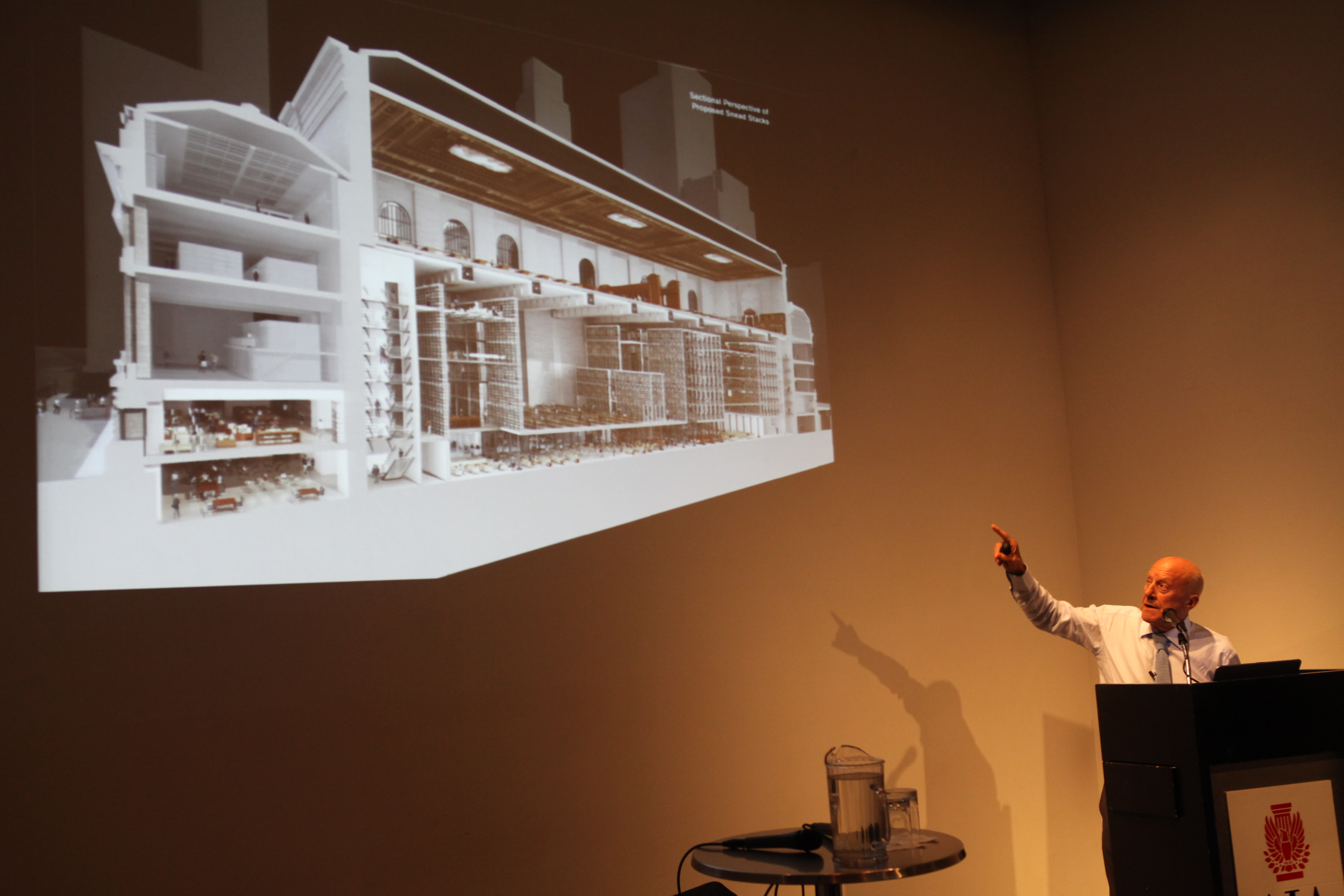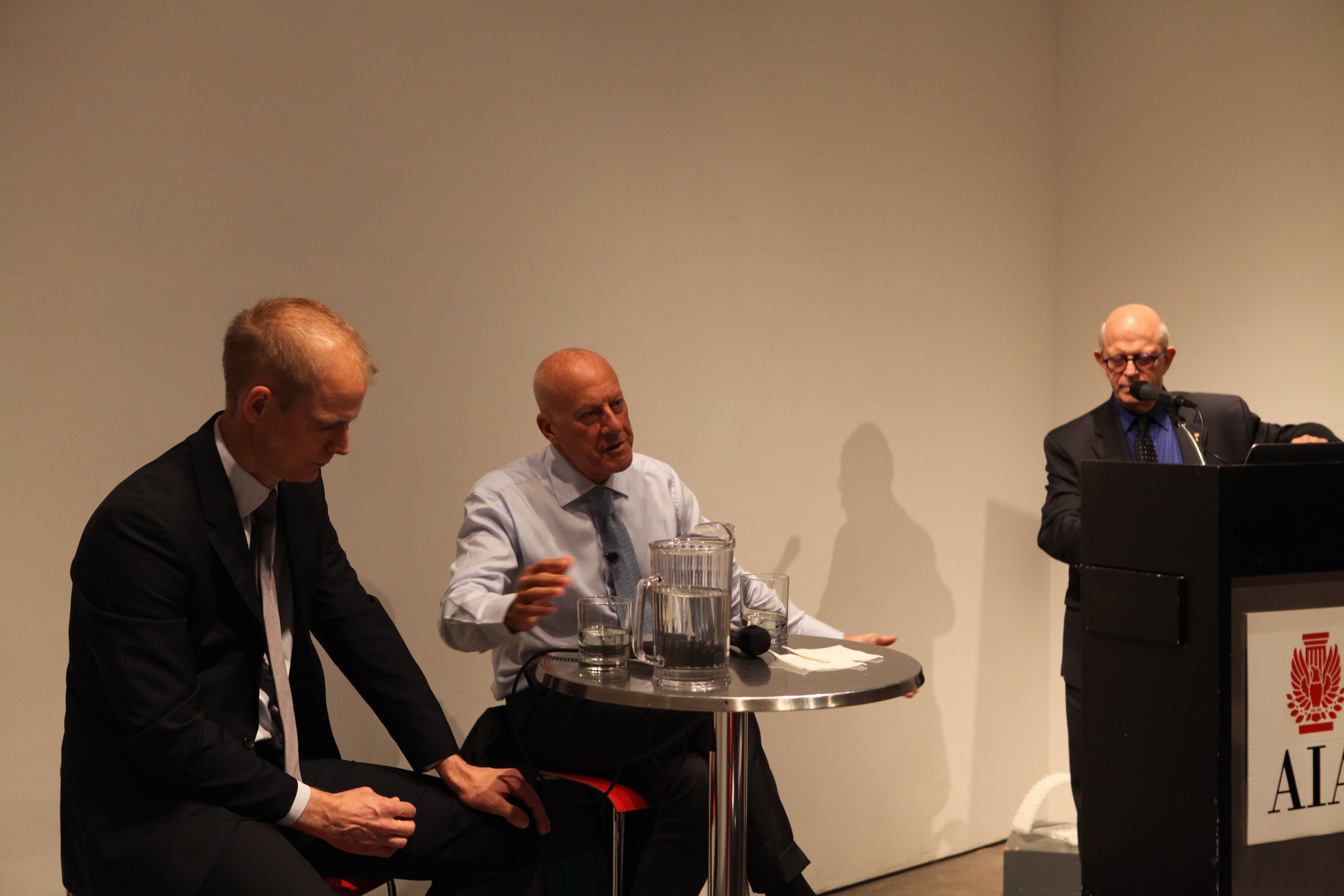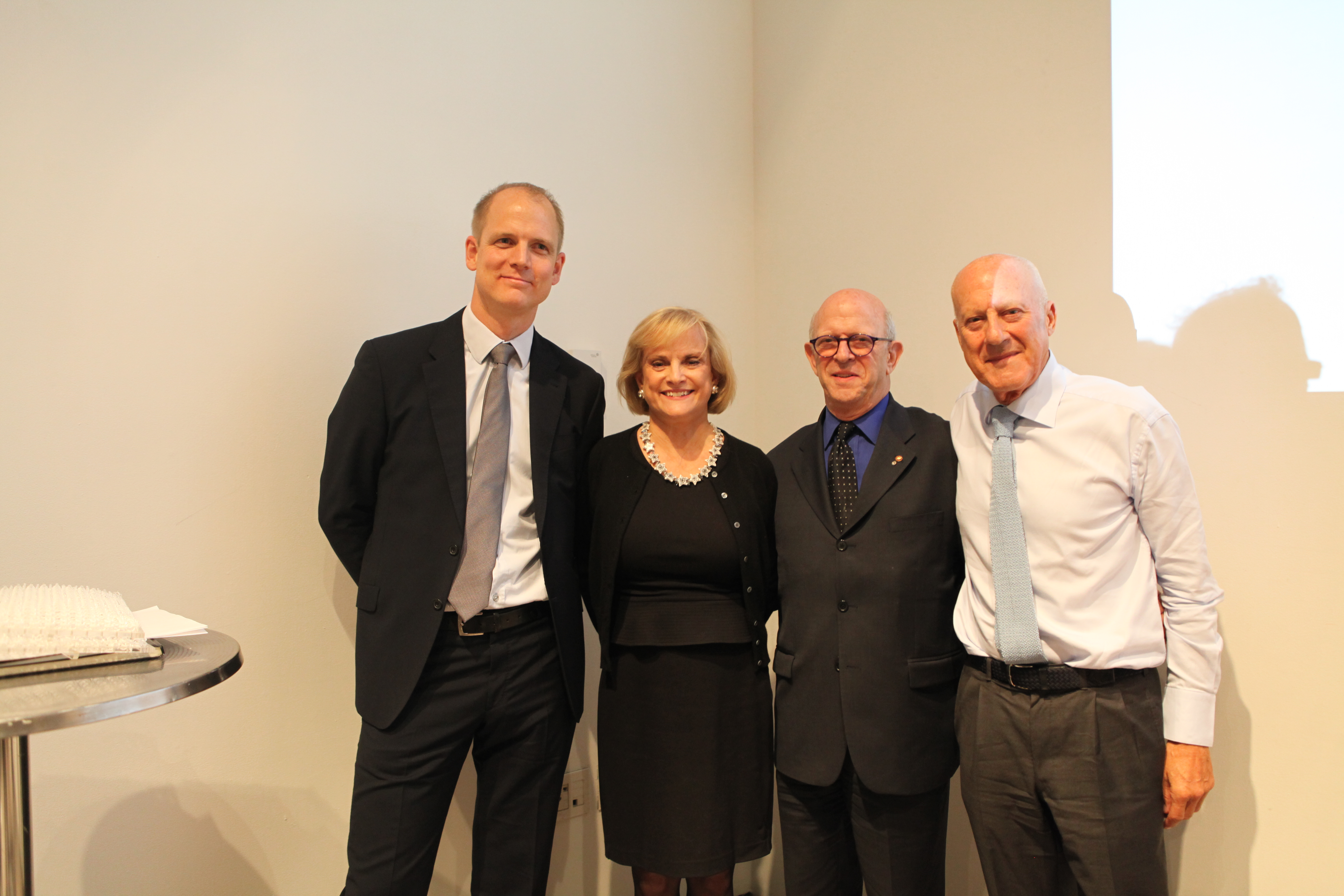by: Bill Millard
Energized by a love of “anonymous architecture” – and unfazed by the New York Public Library’s recent decision to return his firm’s redesign of the 42nd Street main library to the drawing board – Norman Foster, Hon. FAIA (also known, since his elevation to the peerage in 1999, as Lord Foster of Thames Bank), gave an overflow audience a persuasive manifesto in the guise of a set of personal recollections. His discussion combined an homage to the structural-tile wizards Rafael Guastavino Sr. and Jr. – treasured among architects, particularly those familiar with the scholarship of MIT’s self-described “Guastafarian” John Ochsendorf, but largely unknown outside this community – with a broader salute to some of his design heroes. These often-under-recognized figures in architecture, engineering, and product design have inspired Foster’s work, from his working-class boyhood in Manchester, before he was even aware the profession of architecture existed, to his current position among its globally recognized leaders. Together with Foster + Partners engineer Roger Ridsdill Smith, who elaborated on the remarkably energy- and materially-efficient properties of shells and related double-curved forms, Foster made a convincing case for the combined functionality and beauty of geometries that “do more with less.”
In Foster’s eyes, the great anonymous designers carry forward a tradition of high-functioning, unostentatious, materially economical design that intertwines with England’s neoclassical/neo-Gothic tradition (exemplified by Alfred Waterhouse’s Manchester Town Hall, the inspirational building of Foster’s youth) in an ongoing dialogue that enriches the global built environment. Not all of his heroes have gone unrecognized: Joseph Paxton’s conservatories, Crystal Palace, and other works, for example, made possible through his understanding of nature’s highly efficient structures such as giant water lilies (on which his daughter could stand, one of several eye-catching load-test images Foster presented), are rightly heralded as precursors of high-tech Modernism. The gull-winged Mercedes-Benz 300SL, whose rising doors were a practical solution to the access problem created by a monocoque chassis, optimizing its strength/weight ratio for racing, has many admirers among autophiles, whether or not they recognize its engineer Rudolf Uhlenhaut. Yet the myriad unknown builders in “primitive” craft communities centered largely around the Mediterranean, informs another key influence, Bernard Rudofsky’s Architecture Without Architects (1964). Foster argued that these builders have discovered and implemented core principles of optimization leading to the Guastavinos’ achievements and beyond: increasing spans, creating beautiful forms, and maintaining fire resistance while decreasing the inputs of mass, cost, and time. The same principles underlie today’s most advanced applications of digital design and material science.
Foster’s lifelong obsession with drawing and measuring buildings reflects an affinity for the essentials and subtleties of structure, regardless of its social connotations. As a student, he recalled, “I broke the mold. Everybody at Manchester was drawing buildings like Georgian houses in the classical tradition, but I was fascinated by that anonymous tradition: by windmills, by big barns. Not just what they looked like, but how they worked internally, how they were made.” His years working with Buckminster Fuller deepened his sense of nature as the ultimate mathematician; he is fascinated with the NYPL’s modular structural grid, which supports the Rose Reading Room atop seven stories of steel stacks (no longer usable for book storage, owing to climate-control and fireproofing concerns, but now being preserved). He brings fresh eyes to the “celebration of the cantilever” in Frank Lloyd Wright’s Fallingwater and Pierre Koenig’s Case Study House 22. He downplayed his own firm’s projects, but devoted considerable attention to its investigations (partnering with the European Space Agency) into lunar construction, suggesting connections between a 1940s air-supported office (erected, he reported, on an astonishing 75-cent-per-square-foot budget), and studies of the efficient cellular structure of bone tissue. A proposed solution to the challenges of transporting materials to the moon: applying 3D printing technology to convert the moon’s regolithic dust itself into a building material. If humanity eventually establishes lunar bases, explorers may well find the moon an ideal site to apply Fosterian optimization principles, though Foster himself told one questioner, “large-scale colonization, I just don’t see it – I’d rather be down here.”
His colleague Smith presented models of hanging chains that, when inverted and solidified, offer an exponential increase in stiffness over flat plates, so that a concrete roof only a few centimeters thick could support a crowd (in another striking load-test image from 1920s Germany). He hailed elegant tile and brick structures by Uruguay’s Eladio Dieste, innovations in thin concrete by Pier Luigi Nervi, and German refugee Anton Tedesko’s barrel-vaulted Hershey Sports Arena – built under his supervision by the workers of the Pennsylvania chocolate factory themselves, with no prior experience in concrete construction – among instances of this tradition.
It is no accident that such achievements frequently appear in circumstances involving resource constraints; the capacity to do more with less appears to combine inventiveness mothered by necessity and a willingness to look past conventions. These buildings also arguably render irrelevant the style wars that continue to ravage architectural debate in the U.K. over recent decades. Foster offered a graceful, powerful rebuttal to the assumption that beauty inheres only in the forms favored by a ruling class. One might say Foster’s work also represents the intertwining of two other powerful, optimistic traditions: the technologically meritocratic and the socially democratic. AIANY President Lance Jay Brown’s conclusion crystallized what most, perhaps all, of the audience had in mind: “It’s not so much an opportunity to thank you for what you have done; it’s an opportunity to say we look forward to what you will do next.”
Event: Innovators with Norman Foster: From Guastavino to the Moon
Location: Center for Architecture, 05.14.2014
Speakers: Norman Foster, Hon. FAIA, Founder and Chairman, Foster + Partners; Roger Ridsdill Smith, Senior Partner, Foster + Partners; Susan Henshaw Jones, Ronay Menschel Director, Museum of the City of New York (introduction); Lance Jay Brown, FAIA, 2014 President, AIANY (introduction)
Organizers: Museum of the City of New York (in conjunction with the exhibition Palaces for the People: Guastavino and the Art of Structural Tile) and AIANY













